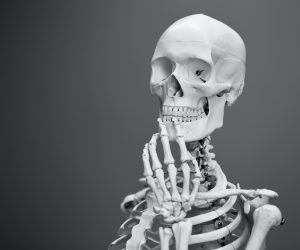
Fitness Goals This Winter? Get a Personal Trainer
Bowling Green State University via Newswise – At the start of every new year, gyms fill with patrons who have fitness aspirations. But by February, the gyms are mostly empty. There’s a way to avoid this, says Nathan Peters: hire a personal trainer.
Peters, an assistant teaching professor in Bowling Green State University’s College of Education and Human Development, teaches exercise science courses in the School of Human Movement, Sport and Leisure Studies.
“A certified personal trainer, or CPT, will help you get the most return on your investment,” he said. “People often start with lofty goals and the first week or two goes well, but then life starts to creep in and exercising gets pushed toward the back burner.”
Even for someone who sticks with the fitness plan longer, over-eagerness at first can mean soreness or even injury. Either issue makes it easy to quit.
By contrast, a personal trainer with the right credentials and experience helps keep fitness a priority. “They’ll keep it on your calendar,” he said, “so you’re more likely to stick to it long term and experience the benefits of regular exercise.”
Credentials Matter
Choosing the right personal trainer is important, but look beyond a simple “personal trainer” title, Peters said. Credentials matter. Several certifications are available, but some are dramatically better than others.
“You don’t want someone who just read a book and took an online exam,” he said.
At BGSU, students graduate only after completing focused classwork and working more than 500 internship hours with everyone from athletes to people who have specialized needs. The classwork, centering around biomechanics, physiology and anatomy, prepares students for the profession’s most comprehensive certifications. These include the American College of Sports Medicine and the National Strength and Conditioning Association.
“Both certifying bodies are considered the ‘gold standard’ of the fitness industry. A certification from one of these organizations is highly regarded,” Peters said.
Fitness with Special Health Issues
What about people who have health issues as well as fitness goals? Personal trainers become even more critical to success, Peters said.
“Many people have additional health concerns,” he explained. “Maybe they recently had a heart attack. Maybe they have diabetes, COPD, multiple sclerosis or another health issue that would benefit from exercise but needs some extra guidance.”
It’s very important in these cases, he said, to “do your homework.” In addition to the CPT certification, look for the “CEP” certification, which identifies a certified clinical exercise physiologist.
“Whoever you choose to work with, it’s very important that they’re educated and trustworthy,” he said. “You’re putting your health and safety in their hands.”
Finding a Personal Trainer
Once you’re ready to find a personal trainer, how do you do it?
While many fitness centers employ personal trainers on staff, others are independent contractors who meet you at your gym or even at your house, Peters said. Similar to finding any other professional service, an online search will help identify professionals in your area. However, you may need to ask about their credentials.
Local community members may find that search even easier. BGSU pairs its resources with local needs by making its Recreation and Wellness Center available to the public for a modest fee. In addition to the fitness equipment and the unusual advantage of a pool, Peters said University students assist patrons as personal trainers.
Your Health Matters
The most important factor in fitness success, Peters said, is to realize how much it matters. Even though staying physically fit can be a challenge in busy lives, “nothing is more important than your health.”
Callout
Tips to keep a New Year’s fitness resolution
- Seek someone to help you. For many people, going it alone is a fast track to giving up. If it’s a certified personal trainer or a friend, finding a social support partner can be a prerequisite to long-term success.
- Make it a priority. “It’s just as important as picking up your kids from school or going to a meeting,” Peters said.
- Start slow. An hour of intensive exercise at the gym may be too much to start; it can put you into a yo-yo pattern of exercising too much, then not exercising at all.
- Work physical activity into your schedule all day long. Instead of thinking of fitness only in terms of going to a gym, ask yourself how you can work physical activity into your schedule. That might mean taking a walk away from your desk every hour or taking the stairs instead of the elevator.
- Avoid the quick fix. Seeking health and fitness is a lifestyle change, Peters said. “It’s not just a month here or there. It’s important to sustain these healthy behaviors through life so you’re fit, happy and healthy today and throughout your elderly years.”
To read the original article click here.






